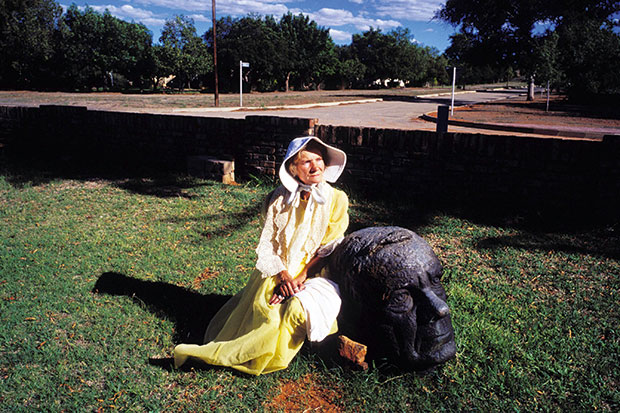Most of us just live in cities, or travel to see them and take them pretty much as they come, for good or bad, save for moaning about how much better they used to be. Does anyone ever say of their home city how greatly it has improved? But aside from all the travel writers, there is a cadre of critics and academics which is endlessly fascinated by cities as physical organisms. This field of study is very distinct from, and considers itself rather grander than, mere architecture, from Stalinist housing estates to the wreckage of post-industrial Detroit. Its status has increased since the moment was reached, some time in the early 21st century, when finally more of the human race lived in cities than in agricultural communities. But does writing about this make anything better, given that even those with power to wield have been trying and largely failing to rein in the irrational exuberance of cities since at least the time of James I?
Deyan Sudjic is the director of the Design Museum, but has long also been a fine architecture critic at the journalistic more than the academic end of things. Cities are his thing, and have been ever since his The 100 Mile City in 1992 attempted to analyse the sprawl of some of the world’s great cities (in those days all western ones, plus Tokyo). He is a tireless traveller to, and trudger round, the cities of the world: when he describes a place, you can be pretty sure he has been there.
The Language of Cities revisits this territory a quarter of a century on, casting its net both wider and shallower. It is a series of six essays which have different titles (What is a City, How to Make a City, How to Change a City, The Government of Cities, The Idea of a City and, finally, Crowds and their Discontents). But there is not really much to distinguish these sections, all of which consist of Sudjic rambling knowledgeably on about the way cities develop over time and cope, or fail to, in various ways. He is especially scathing about London for seeming to have given up trying to control, well, anything really.
His book is easily digestible but not very memorable: he says he wrote it over the course of two summer holidays in a Tuscan farmhouse and it certainly has a relaxed, glass-of-chianti-at-the-elbow feel. The final short chapter on crowds, which you might expect to tackle the causes and aftermaths of riots from London to the ‘Arab Spring’, touches only briefly on this before veering off into the well-worn subject of mass tourism. He concludes:
A successful city is an entity that is continually reconfiguring itself, changing its social structure and meaning, even if its contours don’t look very different.
Unarguable, but scarcely enlightening.
Stephen Graham’s Vertical is a denser and much more academic affair, as you’d expect from a professor of cities and society at Newcastle university’s School of Architecture. There are footnotes, and plenty of them. Instead of two summer breaks, he’s spent some ten years putting this together. He takes the view that we’ve been looking at cities all wrong, all laid out like maps, when what we should be doing is taking vertical slices through them instead.
He doesn’t just mean from the tip of the skyscrapers to the metro tunnels below ground: he means from the circling satellites round the planet right down to bunkers, sewers, mines. It’s a compelling conceit, and one he simplifies further into just two sections: ‘Above’ and ‘Below’. And of course he begins with Dubai, which Sudjic also has a fair bit to say about. All urban commentators must start with Dubai, that unnecessary, artificial city, the workings of speculative capital vertically (and in the case of its artificial islands and peninsulas) horizontally expressed.
Graham sees the world in Ballardian terms, a stacked society where the super-rich and privileged are up there in penthouses, planes and helicopters while the underclass toil down below, even in mines up to four times as deep as the tallest skyscrapers are tall. Elites, he says, are increasingly abandoning their edge-of-town compounds in favour of the tops of supertall towers. The multilevel city, as forecast in Metropolis and Blade Runner, is happening now. And he considers bombers and drones, raining death and destruction from the sky. He has a lot to say about war and death. Higher up is not always good — many of the deaths of elderly and poor French people in the heatwave summer of 2003 were, he says, because they were roasting up in the attics beneath the roofs. In Paris, the street still reigns supreme.
Graham’s chapter headings fit closer to the subject matter than Sudjic’s but there is the same sense of an informed guide bumping to and fro, from one area of interest to another — in his case including sewers, favelas, American air bases and gold mines — rather than coming to any particular conclusion. If you want a shortish, easy read, choose Sudjic’s. If you like the world of obscure and scary facts over 400 pages, choose Graham’s. And if you’d rather not know how we are wrecking our world through rampant urbanism, read neither: because to be honest, the future doesn’t look too great.
The post Highly undesirable appeared first on The Spectator.
Got something to add? Join the discussion and comment below.
Get 10 issues for just $10
Subscribe to The Spectator Australia today for the next 10 magazine issues, plus full online access, for just $10.
You might disagree with half of it, but you’ll enjoy reading all of it. Try your first month for free, then just $2 a week for the remainder of your first year.














Comments
Don't miss out
Join the conversation with other Spectator Australia readers. Subscribe to leave a comment.
SUBSCRIBEAlready a subscriber? Log in